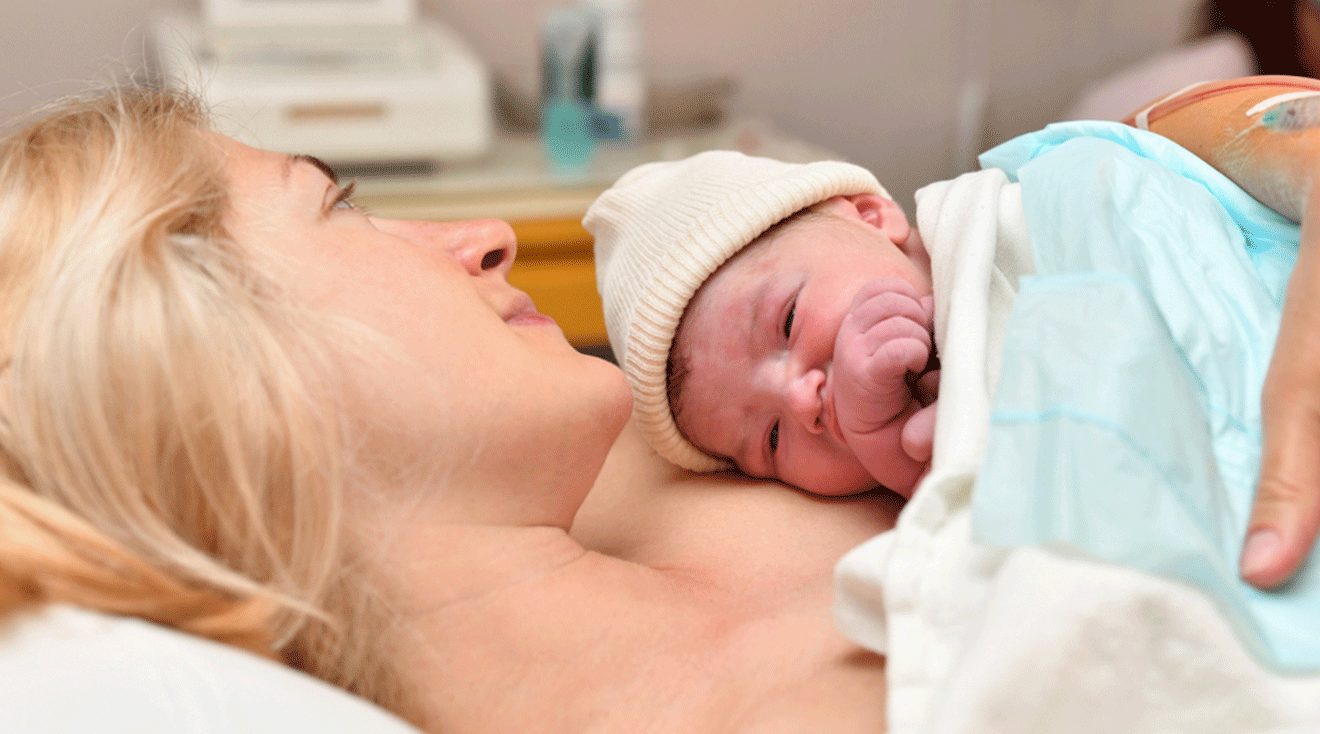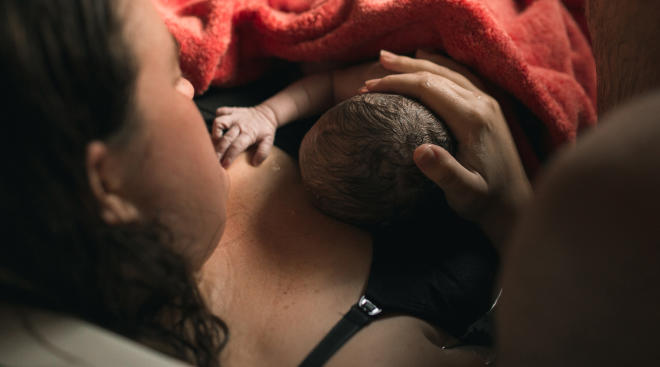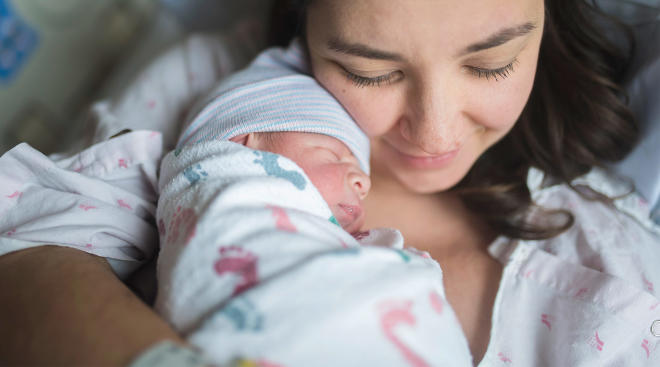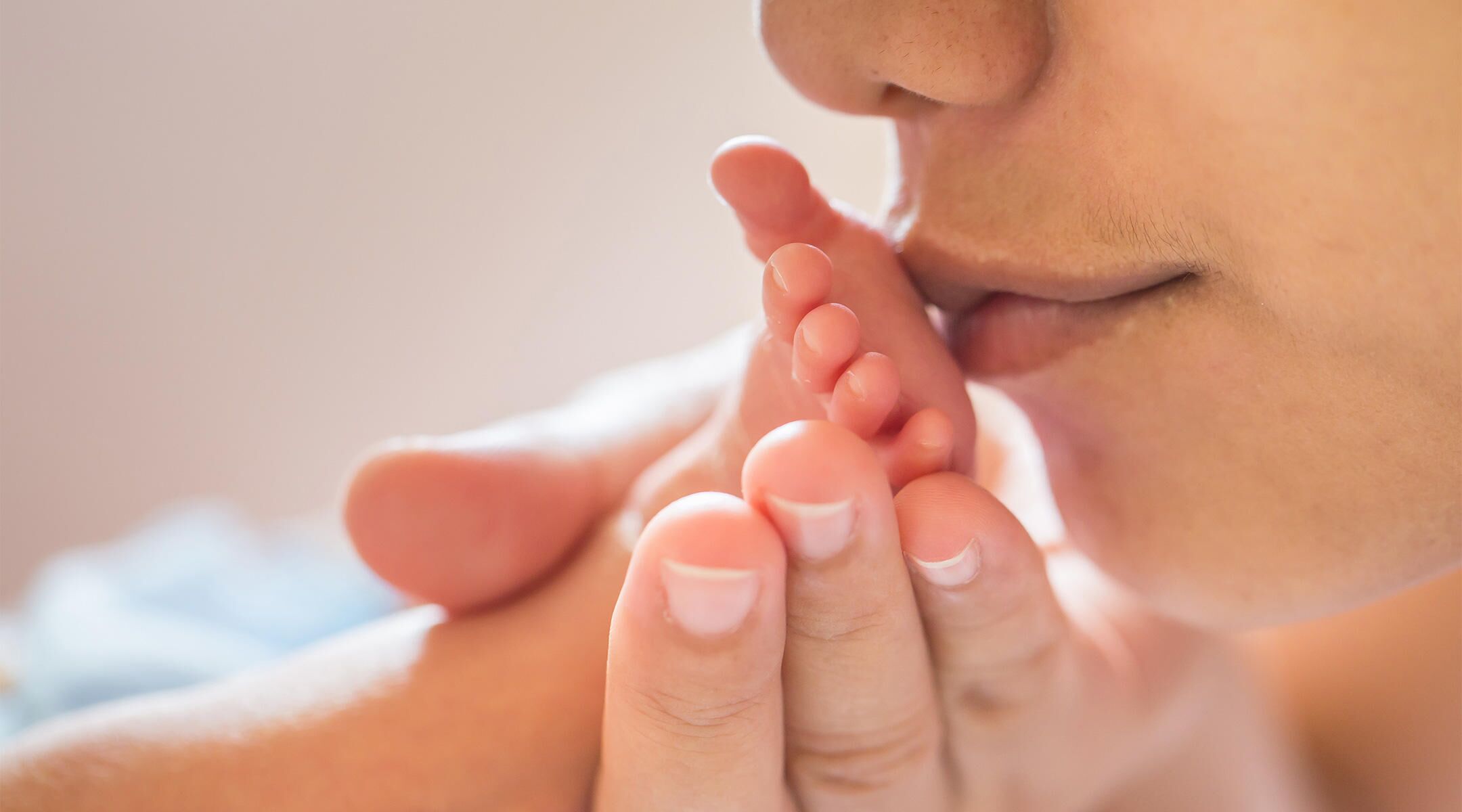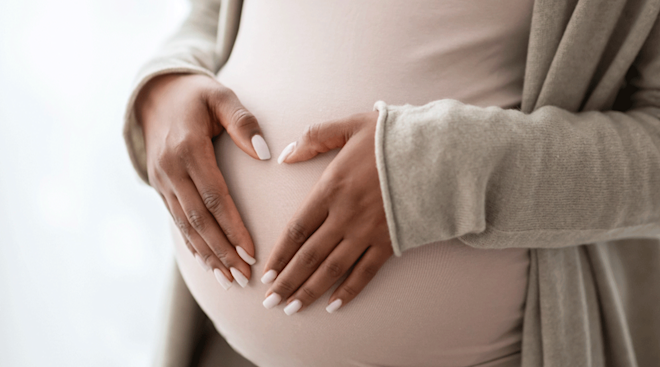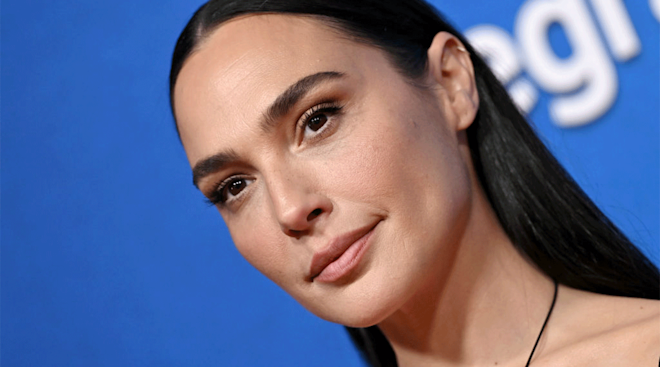What Is a Lotus Birth—and Is It Safe?
If you’ve been researching ways to have a lower-intervention birth, you might have come across the concept of lotus birth—a practice that involves leaving the placenta attached to baby for a few days after delivery. “I wouldn’t say it’s something that’s very commonly pursued,” says Alison Shew, MD, an ob-gyn at Duke Raleigh Hospital in Raleigh, NC, although she says she has patients who bring up the topic “a few times a year.”
In theory, baby’s gradual separation from the placenta allows for a gentler, calmer delivery. Problem is, there aren’t studies to show that lotus birth is safe or beneficial for moms or babies—and it does pose a few practical hurdles and health risks. Read on to learn more about lotus birth.
In a lotus birth, the umbilical cord isn’t clamped and cut after delivery, says Shew. Instead, it remains attached to baby and the placenta and is allowed to dry up and fall off on its own, which typically happens “on average about a week later,” she says.
Lotus birth vs. delayed cord clamping: What’s the difference?
Delayed cord clamping is a common practice in most hospitals: The umbilical cord isn’t clamped or cut for at least the first 30 seconds after birth, says Sonya Brar, MD, an ob-gyn at Mount Sinai Hospital in New York City and an instructor at the Icahn School of Medicine at Mount Sinai. For a lotus birth, the umbilical cord isn’t clamped or cut at all but detaches days later, on its own, she says.
The American College of Obstetricians and Gynecologists (ACOG) notes that delaying clamping for 30 to 60 seconds after birth decreases the chances of iron deficiency in babies for up to 6 months. “It also can lower the incidence of necrotizing enterocolitis and intraventricular hemorrhage, which are serious conditions that sometimes happen due to prematurity,” says Brar.
For a standard hospital birth, the umbilical cord is clamped and cut before the placenta is delivered. In a lotus birth, the cord isn’t clamped or cut at all, instead drying up and falling off on its own. Then, the placenta is typically washed and dried, rubbed with salt and herbs and then stored away, says Brar.
“There are no research studies on lotus birth confirming its safety,” says Brar. In fact, many medical experts advise against it.
Research says advocates of lotus birth point out that the placenta contains the same genetic material as baby, and is therefore part of baby’s body, so cutting it is an unnecessary medical procedure.
“We don’t have any studies that show … a real health benefit to doing this,” points out Shew. “It seems to be just a movement towards lower interventions in general.” Advocates also claim lotus birth “promotes breastfeeding and reinforces the mother-infant bond,” says Brar. And while skin-to-skin contact between parent and baby has plenty of benefits, “keeping the placenta attached to baby is not necessary to achieve this,” she points out.
Lotus birth poses several potential risks for both Mom and baby. For starters, staying attached to the placenta could increase the risk of infection for baby, says Brar. “There’s also a risk of jaundice due to excess bilirubin, which can be harmful for baby’s developing brain,” she adds.
For moms, leaving the umbilical cord unclamped could increase the risk of hemorrhage, says Shew. “The typical practice is to cut the cord after one minute, then drain the blood from the placenta. That helps with delivering the placenta in a timely fashion,” she says. In a lotus birth, the placenta could potentially take longer to deliver without these procedures—and any delay “could increase the mother’s risk to have heavy bleeding,” she says.
Frequently Asked Questions
Do all hospitals allow lotus birth?
“Typically, hospitals will not allow lotus births due to concern for risks for the baby,” says Brar. You may get the green light depending on your provider under certain conditions, says Shew—mainly, if your provider determines you and baby aren’t at higher risk of potential complications like hemorrhage and infection.
How should you care for the placenta after a lotus birth?
“There are no specific evidence-based tips to care for the placenta in a lotus birth,” says Brar. “Those who choose to pursue this type of birth will often wash and dry the placenta, rub it with a salt-herb mixture, and place it in a container.”
How long can a lotus birth last?
Theoretically, a lotus birth can last three to 10 days, according to research. But in practice, this appears to be rare. “In my personal experience, the few patients that have chosen this have cut the cord … the following day and decided to separate the placenta,” says Shew.
Who shouldn’t have a lotus birth?
People with certain pregnancy complications, including hypertension, preeclampsia and fetal growth restriction (babies born very small for their gestational age) shouldn’t try lotus birth, says Shew, because the placenta should be evaluated by a pathologist. This helps doctors to check for potential causes and evaluate the need for additional postnatal care.
Brar adds that if your provider suspects chorioamnionitis—when bacteria infect the placenta, amniotic fluid or surrounding tissues during pregnancy—you shouldn’t attempt lotus birth, “because the baby will be at high risk for infection as well.” Baby’s umbilical cord will also need to be clamped if baby requires resuscitative measures after birth, she says.
Lotus birth appears to pose a few serious risks, which is why most healthcare providers don’t recommend it. “It’s not something that we recommend patients pursue, but ultimately we value patient autonomy and do our best to respect wishes around the birth process,” says Shew.
Please note: The Bump and the materials and information it contains are not intended to, and do not constitute, medical or other health advice or diagnosis and should not be used as such. You should always consult with a qualified physician or health professional about your specific circumstances.
Plus, more from The Bump:
Sonya Brar, MD, is an ob-gyn at Mount Sinai Hospital in New York City and an instructor at the Icahn School of Medicine at Mount Sinai. She earned her medical degree from University of Florida College of Medicine.
Alison Shew, MD, is an ob-gyn at Duke Raleigh Hospital in Raleigh, NC. She earned her medical degree from Wake Forest University.
American College of Obstetricians and Gynecologists, Delayed Umbilical Cord Clamping After Birth, December 2020
Italian Journal of Pediatrics, Medico-Legal Considerations on “Lotus Birth” in the Italian Legislative Framework, March 2019
International Journal of Women’s Health, Alternate Birth Strategies, July 2023
Cleveland Clinic, Chorioamnionitis, September 2022
Learn how we ensure the accuracy of our content through our editorial and medical review process.
Navigate forward to interact with the calendar and select a date. Press the question mark key to get the keyboard shortcuts for changing dates.
































